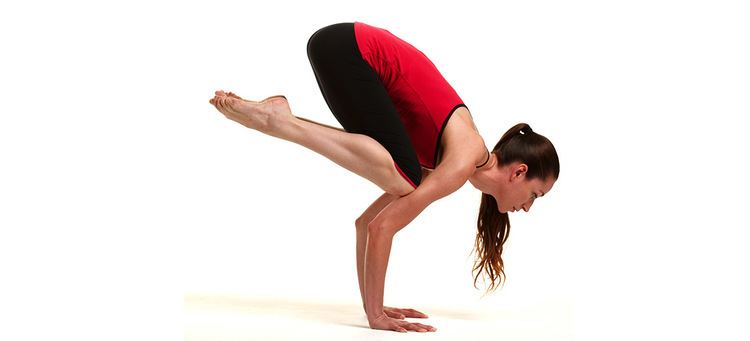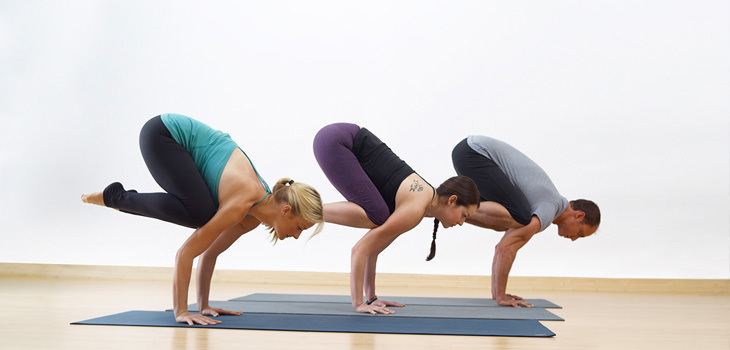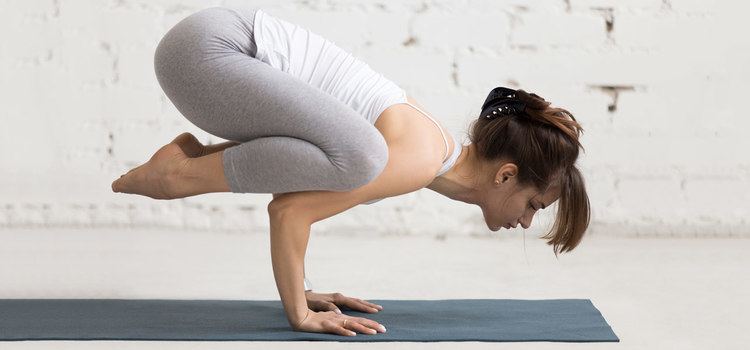Strengthens Arm, Abdomen, Wrist Pose type Arm balance, Core | Stretches Upper back | |
Note Consult a doctor before beginning an exercise regime Preparatory poses Adho mukha śvānāsana, Baddha Koṇāsana, Bālāsana, Virasana, Phalakasana Follow-up poses Adho mukha śvānāsana, Chaturanga Dandasana, Phalakasana Similar Eka Pada Koundiny, Sirsasana, Dhanurasana, Handstand, Mayurasana | ||
Bakāsana (Sanskrit: बकासन, Crane Pose), often used interchangeably with Kakasana (Sanskrit: काकासन, Crow Pose) is an asana. In all variations, Crane/Crow is an arm balancing asana in which hands are planted on the floor, shins rest upon upper arms, and feet lift up.
Contents

Bakasana or crane pose
Etymology

The two names for the asana come from the Sanskrit words baka ("crane") or kak ("crow"), and asana (आसन) meaning "posture" or "seat".

While different yoga lineages use one name or another for the asana, Dharma Mittra makes a distinction, citing Kakasana as being with arms bent (like the shorter legs of a crow) and Bakasana with arms straight (like the longer legs of a crane). In the west, practitioners often mistranslate the Sanskrit "Bakasana" as the English "Crow Pose".
Description

This asana is considered an arm balance. According to B.K.S. Iyengar there are two techniques for entering into this balance. The simple method of achieving it is by pushing up from a crouching position. The advanced method is to drop down from a head stand.
Benefits
The asana strengthens the shoulders, arms, wrists and hands, as well as the core muscles and organs of the abdomen.
Variations
Asymmetric Variations include:
Follow-up asanas
Crane/Crow is often followed by Chaturanga Dandasana (Four-Limbed Staff Pose) or Salamba Sirsasana II (Supported Head Stand, Second version). Some practitioners jump in and out of Crane/Crow via Adho Mukha Svanasana (Downward-Facing Dog Pose). Related hand balances include Astavakrasana (Eight-Crooks Pose) and Titibasana (Firefly Pose).
